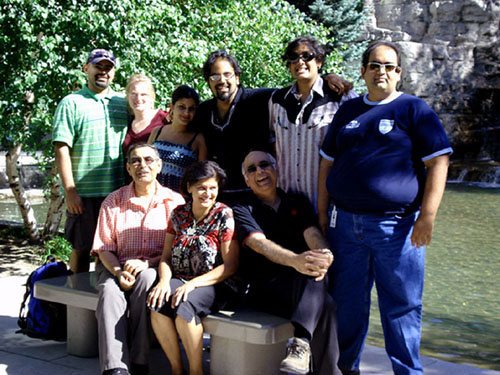Some JYOTI readers asked about the meaning of the Holi or Phagwa celebrations that are taking place across Trinidad and Tobago and in Hindu communities worldwide on Sunday.
We have provided a simplified explanation.
 |
| File: Leaders Kamla Persad-Bissessar and Winston Dookeran greet each other at Holi festivities |
Over the centuries, its practice has changed and it is often mentioned only as a festival celebrating the arrival of Spring when people get together in a lively atmosphere to sing, dance and celebrate the arrival of the season of rebirth.
It is also celebrated in some parts of India as a rite for married women seeking the happiness and well-being of their families, during which the full moon was worshipped.
It is usually celebrated on the full moon of the month of Phagun. The Indian lunar calendar has 13 months of equal days; Phagun is considered March but depending on the phases of the moon it can also be February.
A stone inscription belonging to 300 BC found the province of Vindhya mentions Holikotsav on it. Writers of that period and up to the 7th century have mentioned the festival as well, noting that Muslims also celebrated it.
The literal meaning of the work Holi is “burning” and it is directly linked to the story of Prahalad in Hindu scriptures.
The young Prahalad was the nephew of a despotic evil King who was determined to destroy Prahalad using whatever means he could because the young man refused to worship the king as God, choosing instead to accept the omnipotent God.
King Hiran-ya-kash-yap had achieved remarkable divine powers through his own devotion and the power made him believe he was himself God.
Having failed at a variety of means to kill Prahalad, the king ordered his sister – who had a gift that she could die by fire – to enter a blazing inferno with Prahalad in her lap.
However, like the false promises reminiscent of the witches that guided Shakespeare’s Macbeth to his doom the princess Holika didn’t know that her gift meant she must enter the fire alone to be immune to its effect.
In the process she was destroyed and Prahalad walked away unscathed.
The angry king, who also lived with false hope of immortality, decided to kill the young Prahalad himself, which led to his own death.
Hiran-ya-kash-yap was handed a divine gift that he could not die during the day or the night and that neither beast nor man could destroy him. He interpreted that as immortality. However when he attempted to destroy the devotee of God he found that the Lord works in mysterious ways.
At dusk – the time of day that is neither day nor night – a the Lord Vishnu, in the form of beast that was neither man nor beast appeared and killed the king.
Like so many Hindu religious festivals Holi or Phagwa represents the victory of good over evil. In many communities people burn effigies of Princess Holika to symbolise the destruction of evil.
It’s colourful manifestation seen in Hindu communities worldwide is associated with Lord Krishna, who engaged in playful celebrations with his consort, Radha and her friends.
Gradually, the play gained popularity with the people and became a tradition that is alive today.
There are also many other legends, all of which are associated with the same theme of the triumph of good over evil.





1 comment:
Jai:
A belated happy birthday and many more to you...Thank you for the piece on Holi...We have a show here called "Outsourced" which featured the observance...All the best to you and yours...Tara
Post a Comment